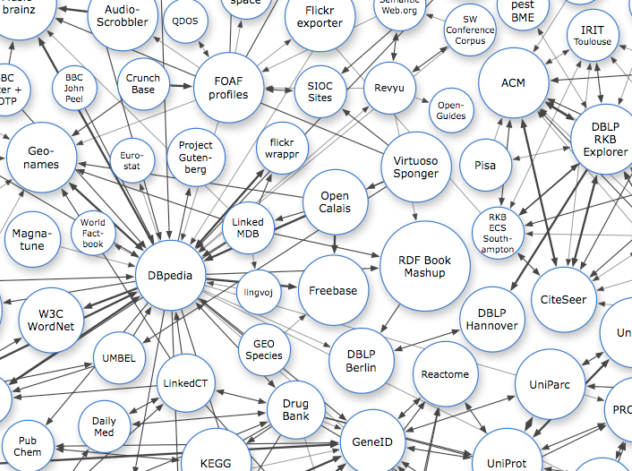Linked Open Data
What is Linked Open Data (and why is it good for genealogy)?
At Free UK Genealogy, we want our historic records to be freely and widely available. We also want them to be discoverable, and used. Opening our data is one step towards that, but to be really useful, we need our data to be linked.
Genealogy is already about links - linking all the evidence for the life of a person, wherever it is held, in whatever format. Much of this information is already held by web pages. Some of the links are made by humans, some by machines. The quality of the links can vary from very high (as when an experienced genealogist takes data from two of our projects and decides that they are referring to the same individual) or quite poor (as with some machine-generated links). Linked Data is a step beyond hyperlinks, linking both content and meaning. At Free UK Genealogy, we are particularly interested in making our records linkable, and linking data related to place.
Making it Linked Open Data (rather than simply Linked Data) means that our data becomes reliably discoverable through a huge network of links. For example, someone working on a person in Northampton, 1891 can see what other people have concerning Northampton in 1891.
These core records are evidence (from a primary or secondary source) of historical events. If someone wants to cite these sources, whether in an academic paper, or simply by telling their friends on social media, they are not well served at present. The citation links we do have are not stable: they relates only to a specific version of the database, and will change if the database changes.
So our first task is to assign a persistent identifier to each core record, so that we can quote citation links which remain meaningful over time. Then, if two researchers quote the same URL, it will be clear that they are referring to the same [record of an] event. This will be a significant improvement on the current situation, even without any Linked Data support.
The second stage of Linked Data development is to support the return of machine-processable data (as RDF, JSON, Turtle, ...) when these URLs are requested with a suitable Accept header. If combined with a search API, this will open up our resources to types of research which are just not possible at present. The Linked Data place information (such as the boundaries of Northampton in 1891) would form part of these machine-processable responses.
The image below gives a tiny glimpse of existing Linked Open Databases.

![]() Part of the Linking Open (LOD) Data Project Cloud Diagram, click for full and historical versions.
Part of the Linking Open (LOD) Data Project Cloud Diagram, click for full and historical versions.
Europeana.eu, a project to connect the cultural data of Europe, has an introductory video (caveat: this was written by someone who wasn't very good at internet searching and apparently ignorant of the 'picture' search function ... but the basic idea is there!).
If you would like to learn more there is a tutorial here, provided by LinkedDataTools.com.